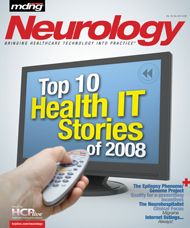Ring in the New Year by Implementing E-prescribing
On January 1, 2009, the CMS e-prescribing incentive plan goes into effect.
On January 1, 2009, the CMS e-prescribing incentive plan goes into effect. If you want to qualify, you should start preparing now. The bonus will be 2% for 2009 and 2010, 1.5 % for 2011 and 2012, and 0.5 % in 2013. A phased-in penalty for non e-prescribing begins in 2012 at 1% of total Medicare B-covered services and increases to 1.5 % in 2013 and finally to a 2% penalty in 2014 and thereafter. In 2008, e-prescribing was also one of three quality measures that could qualify a practice for the 1.5 % bonus from Medicare.
Under the Medicare Improvements for Patients and Providers Act (MIPPA), authority was given to continue the Physician Quality Reporting Initiative (PQRI) program and separate out the e-prescribing measures. Therefore, PQRI measure #125—which states that eligible professionals are to report that they e-prescribed using a qualified program, and to report this activity with one of the three appropriate G Codes— will no longer be considered one of the PQRI measures and has been raised to a separate status with a temporarily increased bonus with relaxed requirements. For example, only 50% of eligible prescriptions must be transmitted electronically. Although the program’s details have not been finalized (as of this writing) and remain at the discretion of the HHS Secretary, the law specifically refers to the definitions of e-prescribing as set out in PQRI #125. A qualified prescribing program is required to have the following four functionalities:
1. The ability to generate a medication list
2. The ability to select medications and conduct safety checks (prompts that include drug information, such as drug interactions, allergy concerns, and appropriate dose/route information)
3. Information on low-cost alternatives
4. Information on formulary or tiered medications, patient eligibility, and authorization requirements of the patient’s drug plan
E-prescribing may be done from within a more comprehensive EMR or with a standalone program, so long as either can demonstrate the above features. As a practical matter, physicians can be confident that the e-prescribing system they are using will qualify under this statute if:
1. They are within an EMR that has been certified by CCHIT.
2. Standalone programs are recognized by the SureScripts network as having these functions. SureScripts-RxHub is the network through which more than 90% of electronic prescriptions are transmitted. Alternative networks exist, but using one of these may run the risk of non-recognition. SureScripts has posted lists of approved vendors to its website.
There are expectations that e-prescribing software will be compliant with Medicare Part D Standards, which go into effect April 1, 2009. It should be emphasized that prescriptions must be transmitted in a true electronic format (called EDI), meaning that printed or faxed transmissions will not qualify as e-prescribing. More than likely, Medicare will reluctantly recognize certain exceptions to this requirement in the case of network or electrical failures. In fact, CMS has decided that faxing a prescription will qualify for the bonus until 2012—as long as the fax is generated from a program that adheres to the other qualifications. Pressure must have been placed by the EMR companies whose products use faxing as their method of prescription transmission. I think this decision is a step backward.
More than 10% of your total allowable Medicare D charges must be within the specified outpatient CPT codes. At first, it appeared that physicians with a large inpatient Medicare load were being penalized by this consideration, but upon further reflection, it is reasonable to expect bonus monies to mirror the amount of e-prescribing performed. Otherwise, it would theoretically be possible to reap a 2% bonus on a large number of procedure-related charges that have nothing to do with e-prescribing. In addition, the Secretary of HHS, at his discretion, may require a threshold number of minimum prescriptions in order to qualify for the bonus.
Since this is a charge-based measure, the appropriate G codes as the denominator will need to be submitted with the CPT I visit codes (numerator). If you have a qualified e-prescribing system as defined above, you must submit one of the following three G codes for all eligible patients:
1. G8443 — All prescriptions submitted via qualified e-prescribing system
2. G8445 — E-prescribing system available, but no scripts written
3. G8446 — E-prescribing system available, but statutes prohibit the prescription transmission or patient preference for paper
CCHIT anticipates certifying standalone e-prescribing systems by July 2009. CMS reserves the right to use submitted PDE data as the basis for compliance verification (though there are no current plans for this information to be available to CMS prior to 2010).
Further information will be posted to the CMS website.
Dr. Zuckerman is an MDNG Healthcare IT Advisory Board member, and the Chief of Neurology and Medical Information Offi cer at Baton Rouge General Hospital in Louisiana.
